
February 3rd, 2017
The Relationship Between Ice Dams and Icicles
Do Icicles Mean Ice Dams?
You may notice that the home shown below has some icicles (sarcasm intended). Obviously, when something like this occurs, it is quite likely that you have ice dams as well as a giant insurance claim from the subsequent water damage it has caused. The fact is, the vast majority of the ice dam steaming projects we complete are not on homes with monster icicles. When we arrive we often see quite modest icicles from the ground. The relationship between icicles and ice dams is not difficult to understand when you study the problem for awhile. This Case Study digs into the topic of icicles and ice dam life cycles.
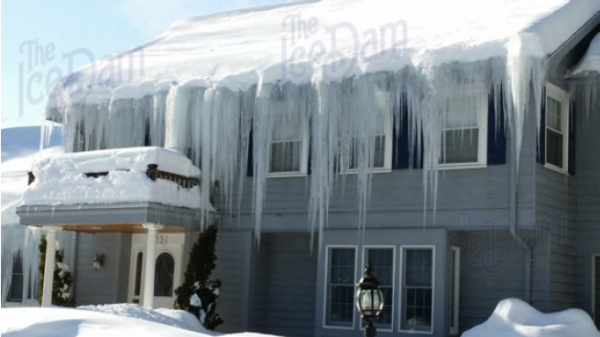
Do icicles mean ice dams? The short answer is NO. While icicles on the edge of the roof are often a precursor to ice dams, they are not always present when ice dams begin to cause leaks through a roof system. Ice dams and icicles are part of the same accumulation but they are not the same thing by any means. This brings us to the normal life cycle of an ice dam.
The characteristics of ice dams change over time. The typical lifespan of an ice dam rangers from a few days to a few weeks. During that time it may get thicker or thinner, icicles may appear and disappear on its’ leading edge, and it may be almost completely hidden under snow or partially or completely exposed. For this reason, there is a big different between a young ice dam and an old ice dam in terms of the presence of icicles. Very young ice dams often have visible icicles on their leading edge. Over the following days most ice dams tend to grow more in depth than thickness, meaning the ice migrates higher up on the roof plane (refer to Case Study #06 for more information). Icicles on more mature ice dams tend to melt away from the affects of direct sunlight or warmer outdoor temperatures. However, while the telltale icicles may be missing, the mass of the ice dam is left behind, frequently hidden under a blanket of snow.

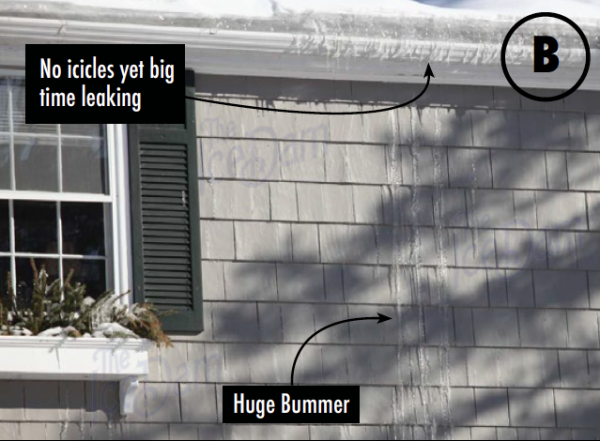
The photos above (A) and (B) demonstrate this phenomenon on two St. Louis Park homes. Virtually no traditional signs of an ice dam and yet you see water leaking down the exterior wall, through the siding and in the wall cavity itself. Bad news.
Case Study #16 examines the important topic of ice migration, from icicles to the interior of your home.
To read more Case Studies click here.
Tags: about ice dams, best ice dam removal in minneapolis, best rated ice dam removal contractor, edina ice dam removal, highest rated ice dam removal company in minneapolis, how do I know I have ice dams, how to file an insurance claim for an ice dam, ice and snow removal, ice dam expert, ice dam heat cable, Ice dam heat tape, ice dam prevention, Ice dam removal, ice dam removal jerks, minneapolis ice dam removal, twin cities ice dam remover, wayzata ice dam removal
Posted in Ice Dam Heat Tape, Ice Dam Prevention, Ice Dam Removal, Ice Dams, Misc., Ice Dams: General Info, Water Damage
December 26th, 2016
We are the only company in the Twin Cities that regularly installs heat cables directly after steaming ice dams off the roof. We have it down to a science. In fact, installing heat cables immediately after roof ice dam steaming is a great idea because our clients prevent same-season call backs for additional ice dam removal. Speaking of science, did you know that we are a direct-to-consumer manufacturer of heat cable? It’s true and we sell it to home owners and installers all over the country.
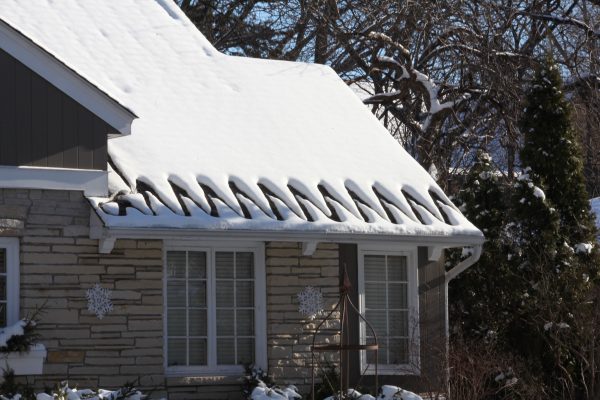
Heat tape installation project Edina Minnesota Ice Dam Company
We are the only company in the Twin Cities that is both a manufacturer of commercial grade self-regulating heat cable and an installer. Our product is ETL and UL Listed, comes with an industry leading 5 year warranty and is built to last. This is not your typical big-box retailer heat cable. Frankly, that stuff is a joke and you should NEVER allow anyone to install it on your roof. Our self-regulating heat tape runs on 6 watts per foot and, as the name suggests, demands more energy when the outdoor temperatures are cooler and less when it is warmer. Our products are sold all over the United States because people have come to recognize our company as an industry leader in the development and installation of the finest ice dam heat cable products in the world. Click here to visit our store. Or, simply go to Amazon. We sell a ton of it there as well under the brand name HeatTapePro.
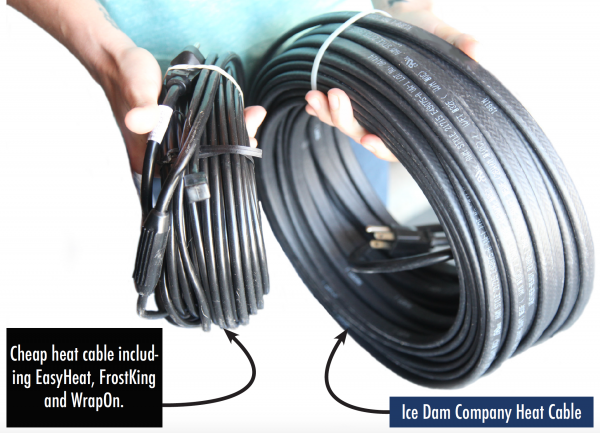
Ice Dam Company Heat Cable – Self-Regulating, Commercial Grade
We are often asked about heat cable and heat tape. Is it a good idea? Does it prevent ice dams? Are there better solutions. As with most topics, the answers are highly dependent on a number of variables. We are going to keep this post simple.
No other company in the Midwest does a higher volume of ice dam prevention work than The Ice Dam Company. Our association with Kuhl’s Contracting, a premier exteriors and insulation company in Minneapolis results in many jobs that combine home performance enhancements with top-notch roofing services. Likewise, The Ice Dam Company also installs a lot of heat cable here in our home town.
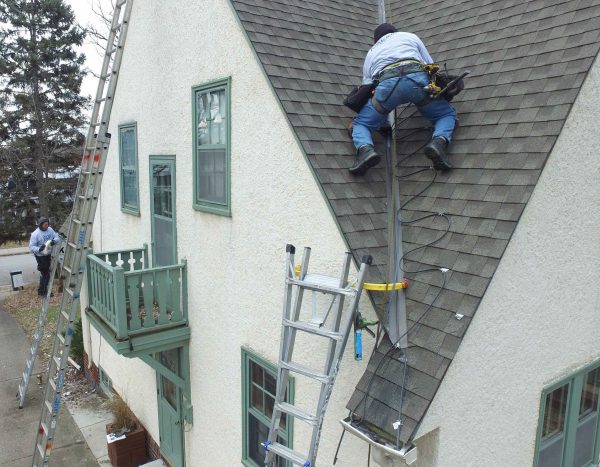
Minneapolis heat coil installation for ice dams
Tags: heat tape pro, heattapepro, ice dam deicing cable, ice dam heat cable, ice dam heat coils, ice dam heater cables, ice dam prevention company, ice dam prevention methods, Ice dam removal, roof deicing
Posted in Ice Dam Heat Tape, Ice Dam Prevention, Ice Dams, Misc.
December 22nd, 2016

Roof deicing cable
HeatTapePro is a premium brand of commercial-grade, self-regulating heat cable. We are strategic partners with the Radiant Solutions Company, the direct manufacture of HeatTapePro and all related installation accessories.
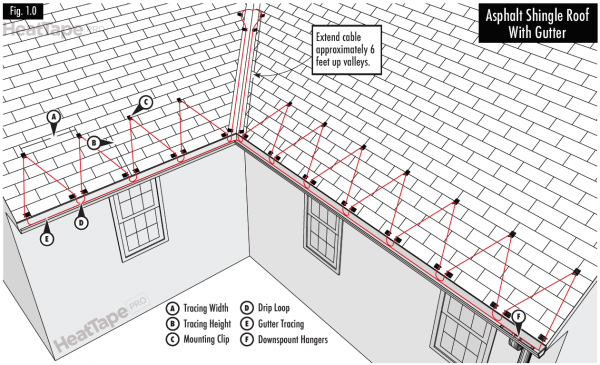
Ice dam roof deicing cable installation information
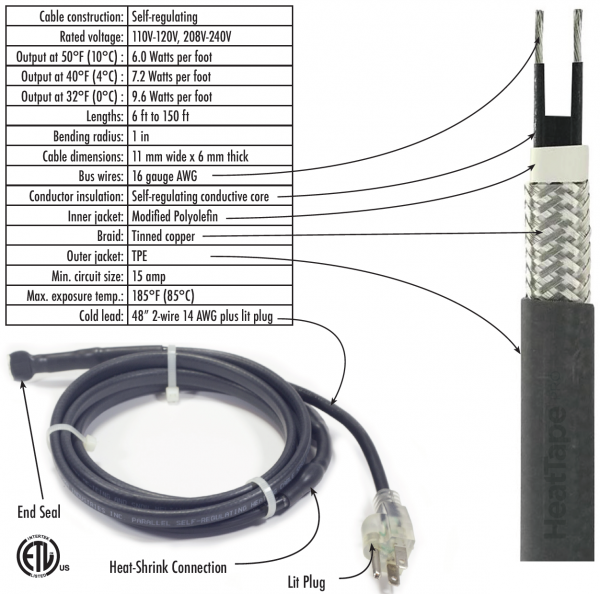
HeatTapePro self-regulating heat cable
HeatTapePro self-regulating heat cables are designed to be used for a variety of roof de-icing, gutter de-icing and pipe freeze applications. Self-regulating heat cable automatically calls for more energy when ambient outdoor temperatures are lower and conversely, less energy when outdoor temperatures are higher. HeatTapePro is pre-terminated in our factory for your safety and convenience. No field modifications will be necessary to the cable to use it for the described purposes.
You can purchase HeatTapePro through our store here or at The Heat Cable Store, , Ebay or Amazon.
Tags: best ice dam heat cable, best rated ice dam heat tape, gutter deicing wire, Heat cable, heat tape, heater cable, heater coils, highest quality heat cable, Ice dam heat tape, ice dam heat wires, minneapolis ice dam removal
Posted in ice dam coils, Ice dam heat cable, Ice Dam Heat Tape, Ice Dam Prevention, Ice Dam Removal, Ice Dam Removal with Steam
December 21st, 2016
It’s official. The 2016 ice dam season has begun. We had a number of crews out today removing ice dams from St. Louis Park, Minneapolis, Edina, Minnetonka and St. Paul. We have more ice dam steamers than anyone in the country and yet it always feels like a bit of a scramble the first day. Men, supplies and equipment all being organized and deployed from our headquarters in Hopkins. Our warehouse looked like a war zone today. Hoses, anti-freeze and kerosene containers, steamers, shovels, all scattered around as we assembled the trucks for duty. As hectic as operations are the first day of each season, our clients see none of it. I liken the whole thing to a duck moving across a pond. From above the duck glides seemingly effortlessly but under the water his legs are moving like crazy. After this many years in business, I know this is how most businesses happen.
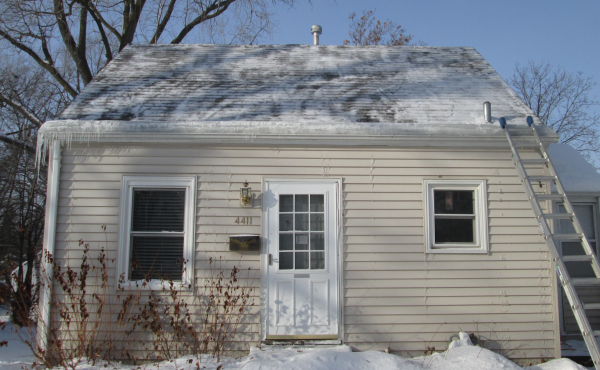
Before and after of ice dam removal project in Minneapolis
Here’s something cool from today. Our guys are all professional roofers which means they understand exterior envelopes and construction assemblies. Today one of our guys found a massive install error on a low-pitch rolled asphalt roof in Minneapolis. The client had no idea. The original roof installer failed to use adhesive between the roofing plies! That’s a major no-no. They also had all of the penetrations negatively lapped (sequenced into the asphalt improperly). Good catch Paul!
The Ice Dam Company is in fact the only company in the country with the in-house chops to diagnose and address problems with insulation, ventilation, roofing, sheet metal and other exterior envelope components. We also install miles of self-regulating heat cable each year on homes where architectural solutions are not appropriate or feasible. Most ice dam removal guys just use their pressure washers to squirt ice off the roof and that’s the end of it. For us, ice dam removal projects are often just the beginning of a longterm relationship with our clients. The Ice Dam Company is a division of Kuhl’s Contracting, the third largest residential construction and remodeling company in Minnesota. There is a huge amount of cross-pollenization between the organizations. Each benefits from the resources and talents of the other. It’s fun to witness.
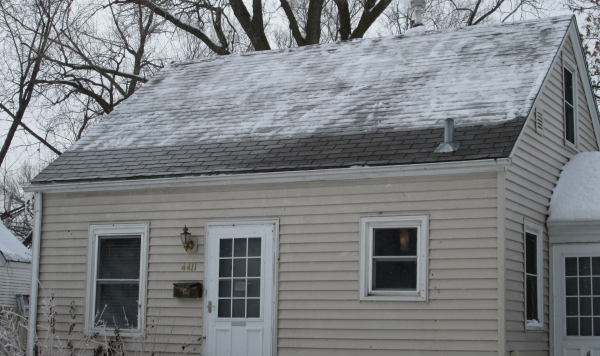
Ice dam removal project before and after photos from Minneapolis project 12-21-16
Tags: best ice dam removal business, best ice dam removal company, ice dam heat cable installer, Ice dam heat tape, ice dam prevention experts, Ice dam removal, ice dam removal and prevention in Minnesota, ice dam removal minneapolis, roofing company minneapolis
Posted in Ice Dam Heat Tape, Ice Dam Prevention, Ice Dam Removal, Ice Dam Removal with Steam, Roof Snow Removal
December 20th, 2016
The Relationship Between Sunshine and Ice Dam Formation
Ice dams happen when there is a section of roof that is above freezing (32°) where roof snow melts which then drains to an area that is below freezing, usually the eaves, where it refreezes. The source of this temperature differential is usually the result of interior heat loss, specifically via air leaks and insulation issues. In fact, according to our experience, 95% of our client’s ice dam problems can be mitigated or eliminated altogether through the modification of the thermal characteristics of the home. Still, we see ice dams on certain homes for reasons outside the scope of it’s architectural deficiencies. Homes with what we might call nearly perfect air-sealing, insulation and ventilation still get ice dams. This Case Study describes such a situation.
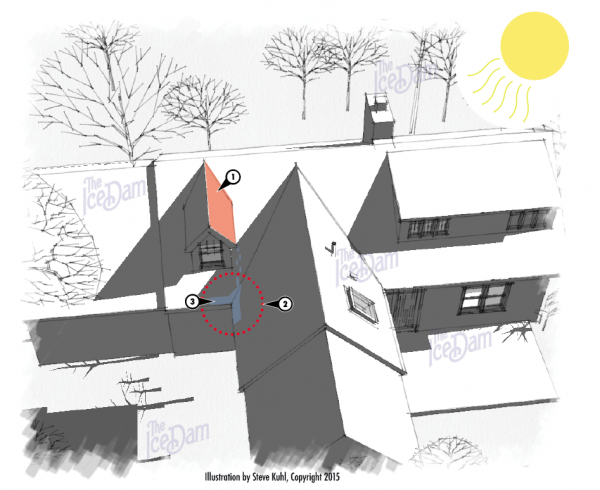
The winter sun hits Minnesota homes (and all homes in this latitude) at a low angle during the winter. The result is that certain roof slopes never see direct sunlight while others get hit quite directly. The above illustration demonstrates an ice dam situation that relates to the heating effects of the sun. Solar radiation warms the roof slope on the dormer (1), the resulting melt water drains to an area of the home (2) that never sees direct sunshine where it refreezes to form an ice dam (3). These are particularly challenging ice dams to prevent. Often times heat tape, also known as heat cables, are the only affordable option.
To read more Case Studies click here.
Tags: about ice dams, best ice dam removal in minneapolis, best rated ice dam removal contractor, edina ice dam removal, edina ice dam steaming, highest rated ice dam removal company in minneapolis, how do I know I have ice dams, ice and snow removal, ice dam expert, ice dam heat cable, Ice dam heat tape, ice dam prevention, ice dam removal jerks, minneapolis ice dam removal, sunshine and ice dams, thermal characteristics and ice dam prevention, thermal imaging and ice dam identification, thermal inspection, twin cities ice dam remover, wayzata ice dam removal
Posted in Ice Dam Prevention, Ice Dams, Misc., Ice Dams: General Info
December 19th, 2016
Ice dams have begun.
In my travels around Minneapolis today looking at ice dam prevention jobs, I noticed a number of homes that already exhibit signs of ice dams. To be more specific, I noticed water and ice coming down the siding and in through the eaves on a number of homes such as the one shown here. This represents a clear signal that water is backing up behind an accumulation of ice on the roof and going where it’s not supposed to go. Want more signs of ice dam issues, click here. With another snowstorm approaching on Christmas, I’m predicting that this might be another troublesome year for Minneapolis homeowners relative to ice dams.
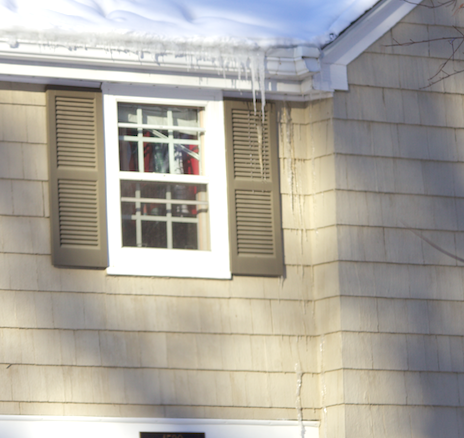
Ice dam removal Minneapolis
What can you do? Unfortunately, once ice dams form and begin to cause problems, the only answer is to have them professionally removed. We use true steamers, machines that superheat water to steam. How do you tell the difference between a high temperature pressure washer used by competitors and a steamer? It’s simple. Does the gun have a trigger or not? If it has a trigger, it is simply NOT a steamer. IDSAFE, a unique organization whose entire purpose is to educate property owners on ice dam steaming, can be found here. The Ice Dam Company is a proud member of IDSAFE. All of our machines have been verified to meet the standards of true ice dam steamers, unlike two of the largest ice dam removal companies in the Twin Cities. (You know who you are!).
Of course the better answer to ice dam removal in Minneapolis is ice dam prevention. We engage in more ice dam prevention work than anybody in the United States, employing both architectural solutions and non-architectural solutions which includes heat tape and heat cable, insulation, roofing, remodeling and general home performance inspections.
Our sister company, Kuhl’s Contracting, engages in the hundreds of attic insulation retrofits and reroofing projects every year in Minneapolis and surrounding communities to address the underlying causes of ice dams. Kuhl’s Contracting also installs heat cable and heat tape on commercial properties and residential properties all over Minnesota. We are proud to sell HeatTapePro, made by Radiant Solutions Company, a premium self-regulating commercial grade heat cable available on a number of online retailers including Amazon. HeatTapePro can also be purchased at The Heat Cable Store, an online direct-to-consumer website that sells a number of heat cable and heat tape products by different manufacturers. Of course, you may also buy HeatTapePro here, at The Ice Dam Company Store.
Click here to schedule an appointment with our ice dam removal or ice dam prevention teams.
Tags: Heat cable, heat tape, heat tape sale, ice dam prevention, ice dam removal company, ice dam removal jerks, ice dam removal minneapolis, ice dam removal twin cities, ice dam steaming minnesota, ice dams, ice jam removal, ice jam steaming, ice removal business minneapolis
Posted in Ice Dam Heat Tape, Ice Dam Prevention, Ice Dam Removal, Ice Dams, Misc., Ice Dams: General Info
December 15th, 2016
A Simple Explanation of Where the Water Goes When Ice Dams Cause Leaks
Where the Water Travels:
Water hitting the Top Plate of the wall (A) spreads out across the top plate, travels downward with gravity, working behind the Siding (B) the Housewrap (C), the Insulation (D), the Vapor Barrier (E) and the Drywall (F). Water always seeks the path of least resistance and therefore frequently shows up through existing penetrations in the ceiling such as lights. Water leaks caused by ice dams can travel many feet from the source before manifesting inside the home. On homes built with vapor barriers on top of the ceiling finish, water will sit on top of the drywall and soak the insulation before leaking inside.
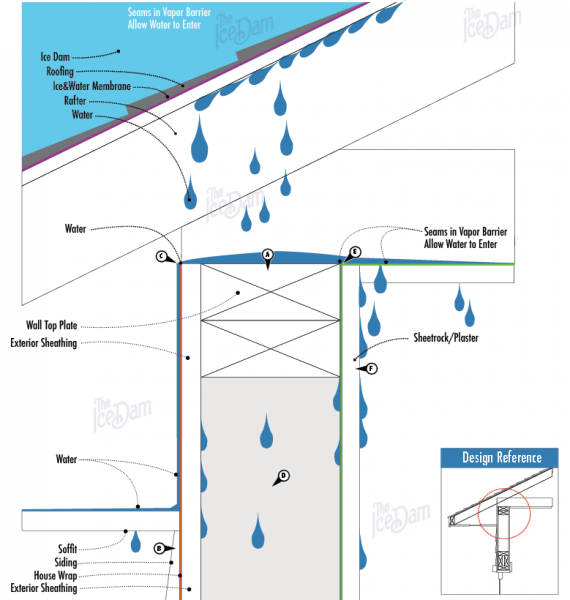
To read more Case Studies click here.
Tags: about ice dams, best ice dam removal in minneapolis, best rated ice dam removal contractor, edina ice dam removal, edina ice dam steaming, heat tape, heat tape ice dam, heat tape ice dam prevention, highest rated ice dam removal company in minneapolis, how do I know I have ice dams, how to tell if an ice dam is a problem, ice and snow removal, ice dam heat cable, orono ice dam removal, twin cities ice dam remover, wayzata ice dam removal
Posted in Ice Dams, Misc., Ice Dams: General Info
December 13th, 2016
Ice Dams on Mansard Roofs Can be a Seriously Big Headache to Remove
Roof Styles Affect Ice Dam Severity
As discussed in Case Study #16, there can be some serious problems if homeowners decide to remove snow from only a portion of the roof plane affected by ice dams. We call it the ‘Double Dam’, which refers to the fact that ice dams can grow much further up the roof when only lower sections of snow are removed (commonly done with roof snow rakes because they can’t reach high enough on the roof).
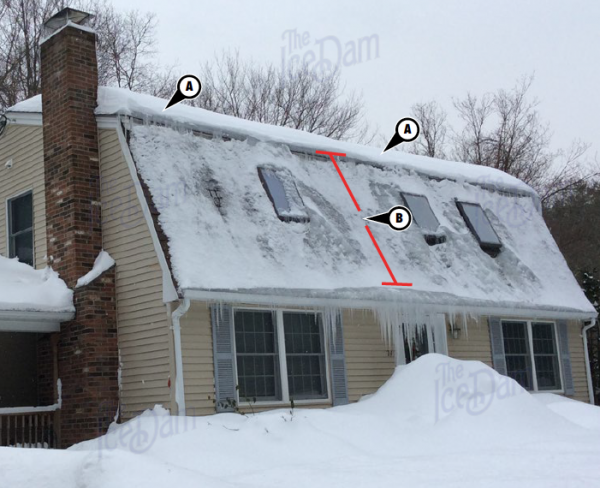
Mansard roofs, such as this one from Edina, Minnesota, can create massive ice dams when the steep pitch (B) is cleared of snow. This is amplified when the slope has directional bias towards the north because the sun will not help melt the ice as it accumulates. In the photo, below, we see two ice dam problems on this Edina mansard roof. The traditional location (A) is exacerbated by the low roof pitch (Case Study #09 explores the relationship between roof pitch, or roof slope, and ice dams). Area B has an ice dam that covers the entire span of the roof slope. This took many hours to remove even with our commercial ice dam steaming equipment.
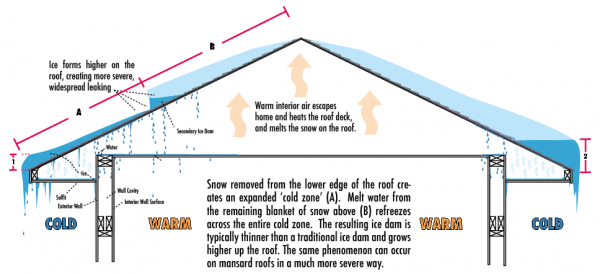
Which Ice Dam Do You Want?
Ice dam #1 is not the one you want. Ice dams like this take hours to remove with steam, which is the most efficient and safe method for removing ice dams. This ice dam is thin but it has grown many feet up the roof. Ice dam #2 is an easier problem to resolve.
To read more Case Studies click here.
Tags: about ice dams, best ice dam removal in minneapolis, best rated ice dam removal contractor, edina ice dam removal, edina ice dam steaming, highest rated ice dam removal company in minneapolis, ice and snow removal, ice dam expert, ice dam heat cable, Ice dam heat tape, ice dam prevention, ice dam removal jerks, identifying an ice dam, is my ice dam bad, mansard roofs and ice dams, relationship between styles of roofs and ice dam formations, removing ice dams with steam, removing massive ice dams, roof ice steaming, roof pitch and ice dam relationship, roof styles and severity of ice dams, twin cities ice dam remover
Posted in Ice Dam Prevention, Ice Dam Removal, Ice Dams, Misc., Ice Dams: General Info
December 12th, 2016
What Frost Melt Patterns Can Tell You About Your Home
Insulation and Ice Dams
At their most fundamental level, ice dams are the result of the interaction of heat loss and snow on your roof. An experienced Ice Dam Company Thermographer can use photos like these in conjunction with infrared imaging to see the weak points in your home’s thermal envelope. If you have a moment on the next frosty morning, take a few photos of your roof from a few angles before the sun hits it. Those photos may end up saving you time and money if you are hoping to fix the root cause of ice dams and home heating inefficiencies. Of course, ice dam prevention involves more than simple insulation job, but understanding the basics through frost pattern analysis, thermal imaging and a good site inspection is a great place to start.
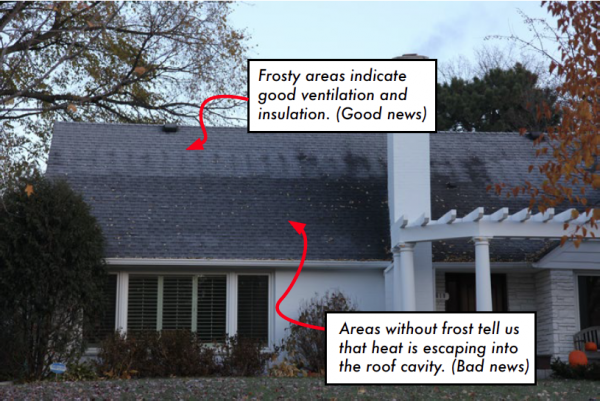
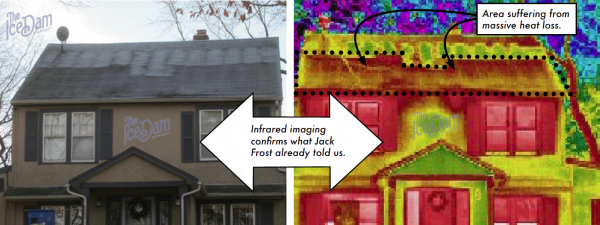

To read more Case Studies click here.
Tags: about ice dams, best ice dam removal in minneapolis, best rated ice dam removal contractor, highest rated ice dam removal company in minneapolis, ice and snow removal, ice dam expert, ice dam removal jerks, minneapolis ice dam removal, thermal inspection, water damage
Posted in Ice Dam Prevention, Ice Dam Removal, Ice Dams, Misc., Ice Dams: General Info, Water Damage
December 8th, 2016
How Using a Roof Rake Can Make Ice Dam Problems Much, Much Worse
You may have read that removing snow from your roof will prevent ice dams, and for the most part that is true. Ice dams get their fuel (i.e., water) from the snow on your roof after all. Remove the snow, remove the problem. So this winter you buy a roof rake, brave the cold and remove as much snow from you roof as you can, leaving a section of snow still in place higher on the roof that you couldn’t reach. A few weeks pass and bam! You see water leaking through your ceiling. How can this be? The answer lies in a phenomenon we call the ‘double dam’, something we have seen over a hundred times in the past decade alone. Our graphic below helps explain the how and why.
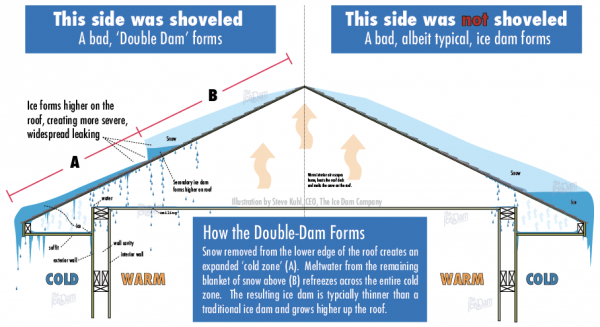
Ice Dams Prevention: How Much Snow Should be Shoveled From a Roof?
Of the two ice dams illustrated above, the Double Dam presents a couple of challenges beyond those of the regular ice dam. First, because ice has grown further up the roof slope, the subsequent leaks inside will cover a wider area. The second problem with a Double Dam is the cost of removal. Although half the thickness, it may take two to three times longer to remove than a regular ice dam. More time equals more money.
Shown below is a very typical Double Dam. This home in Minnetonka, Minnesota had been leaking from both ice dams and the cost to remove them was tremendous. Area A is where the average ice dam likes to form. Area B only forms when someone does an incomplete snow removal job from the roof. So what is the take-away from this case study? Remove all the snow from roof slopes that may produce an ice dam or remove none at all. While the latter may result in an ice dam happening on the lowest edge of the eave, at the very least it won’t be a Double Dam.
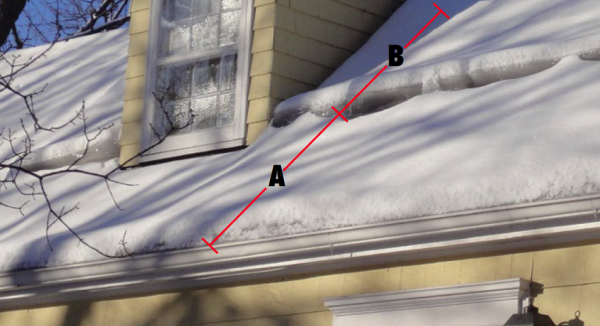
To read more Case Studies click here.
Posted in Ice Dams, Misc.



























